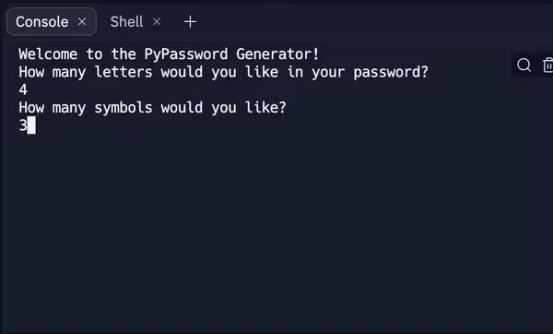作者 | Teri Eyenike
译者 | 布加迪
审校丨诺亚
每个网站都有安全接口的某种表单,需要用户验证身份。这些表单常常使用你的电子邮件和密码来访问网站。登录时使用安全密码对于防止坏人访问你的帐户至关重要。
本文教你如何使用Python创建一个随机密码生成器,只需生成结合字母、数字和符号的加密字符,从而使密码难以被破解或猜中。
不妨构建一个安全的随机密码生成器。
入手准备
要构建一个随机密码生成器,我们将使用这种方法:
写出所有可接受的密码字符类型,比如字母、数字和符号。
让用户能够为生成的密码输入所需数量的字母、符号和数字。
随机化字符顺序,使密码难以被猜中。
创建随机密码生成器
如你所知,互联网上的一些应用程序会在你创建新帐户时建议使用随机密码。随机字符由你决定,可以长达八个字符。
创建一个新文件main.py,编写应用程序的脚本。
上面代码块中的字符组成了列表中显示的密码生成器的组合。
接下来确保用户可以输入数字,这个整数代表在最终输出显示并使用变量声明时字符出现的次数。
\n:表示输入值会进入到下面一行
现在,不妨更新其余代码。复制并粘贴以下内容:
代码块执行以下操作:
- 导入用于生成随机数的内置random模块。
- 使用变量password_list创建空列表[]。
- 遍历range函数中的数字,从起始索引创建数字序列,以最后一个索引加1结束。
- 接下来,为空列表附加内容,使用random.choice()方法为每一个被声明为变量的字符获取随机选择的元素。
- 使用.shuffle()方法对新创建的password_list进行改换,每次输入新密码就改变元素的位置。
将密码列表转换成字符串
复制并更新以下代码:
将列表转换成字符串的过程如下:
- 创建空字符串变量password。
- 使用for关键字遍历密码列表。
- 将密码字符串与循环的char变量连接起来。
- 使用.join()方法将列表迭代由密码列表改为字符串。
- 最后,使用f-strings显示密码的结果。
代码最终结果:
结语
在本文中你开发了一个应用程序,该应用程序每次生成不同的随机密码,从而支持动态使用环境,生成尽可能多的密码。

原文链接:
https://hackernoon.com/how-to-create-a-random-password-generator-using-python































